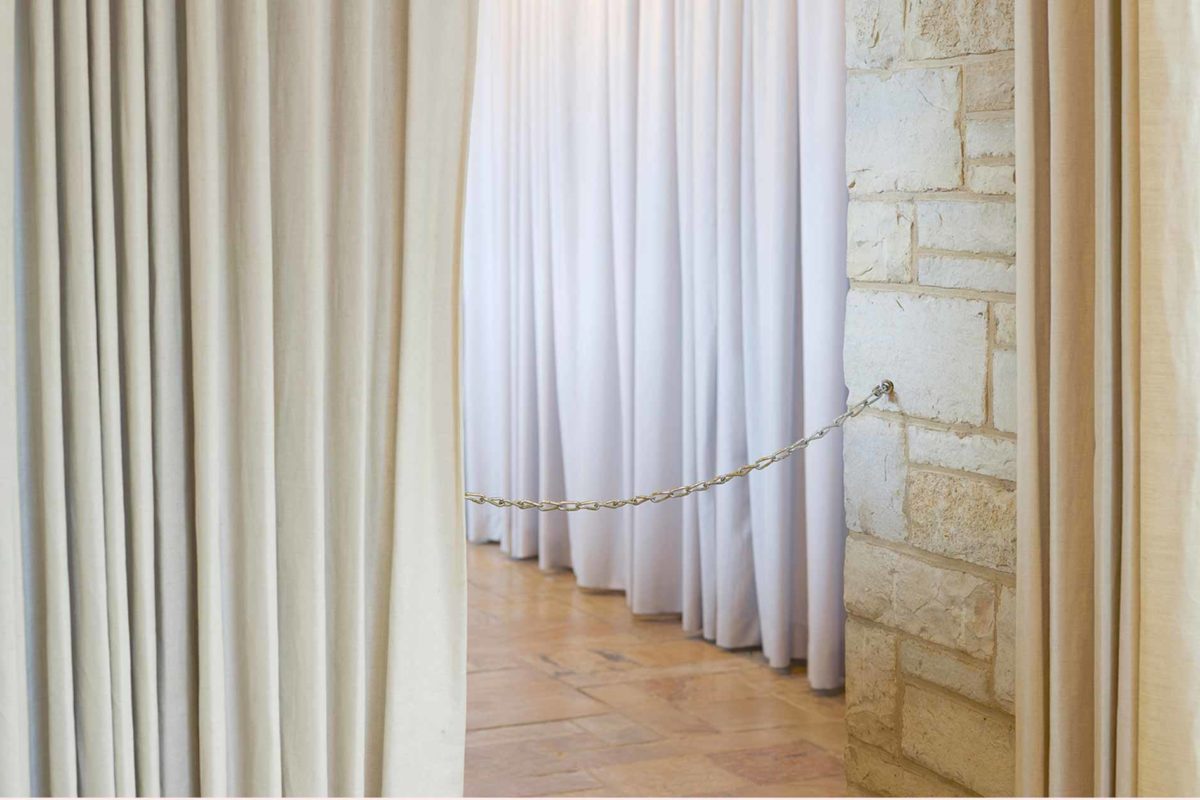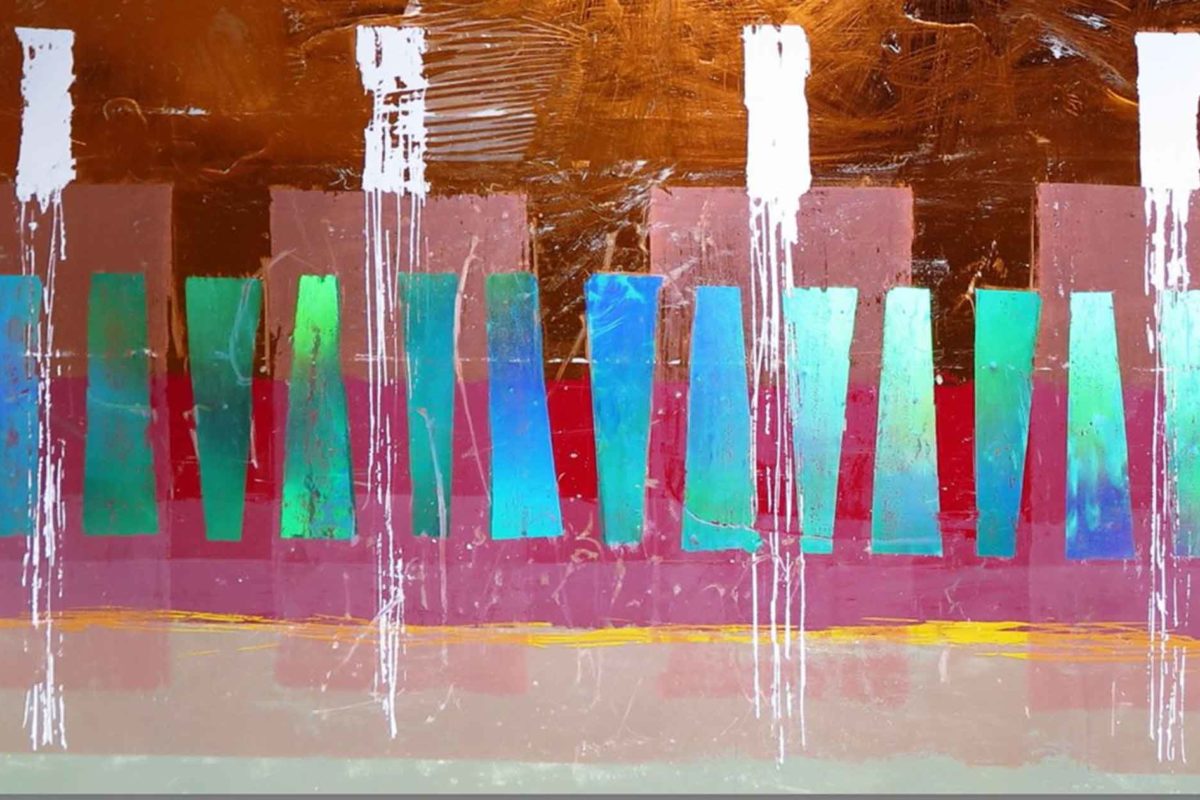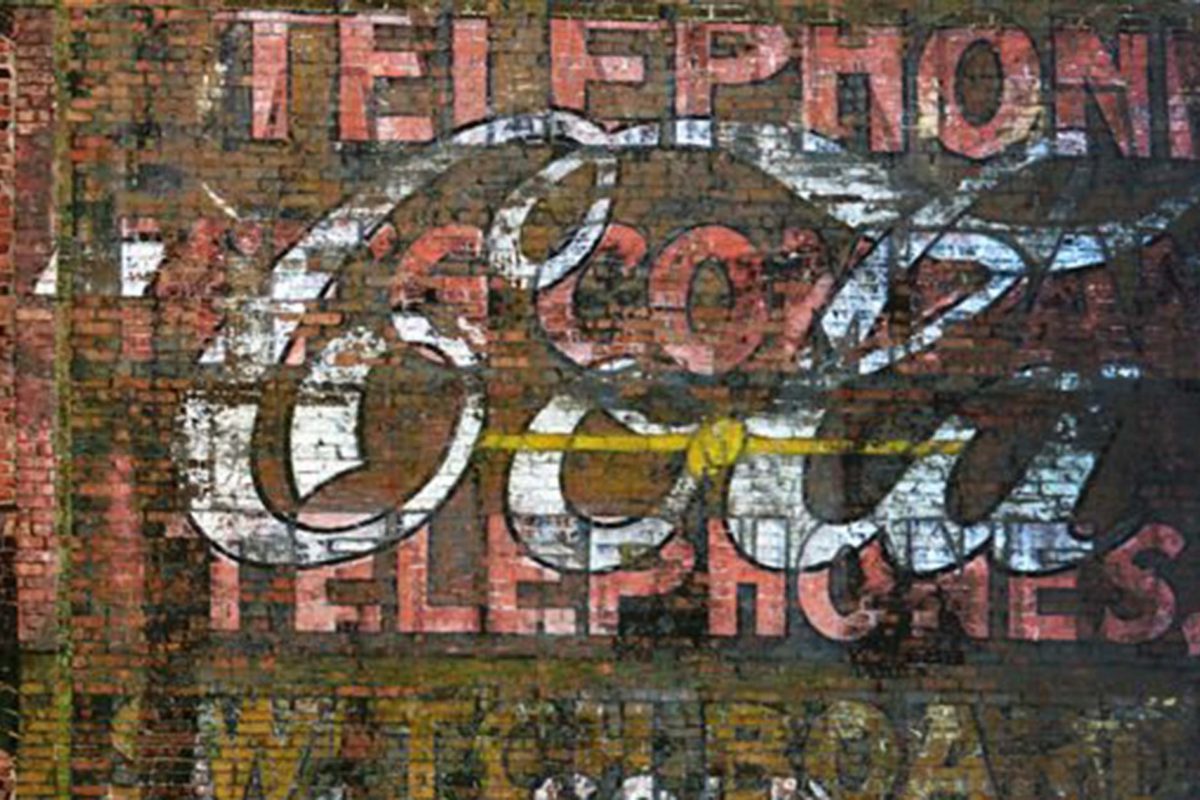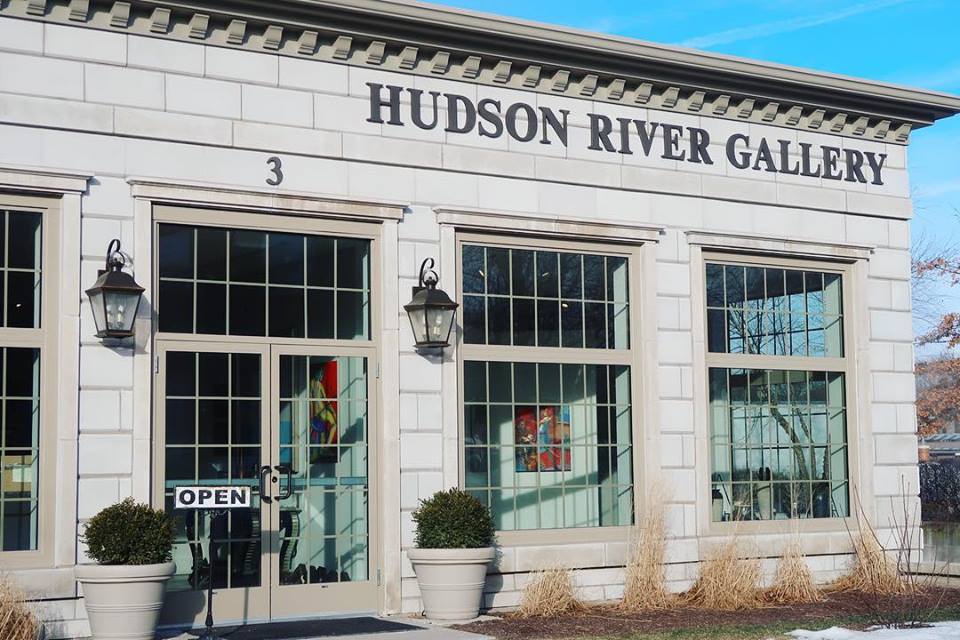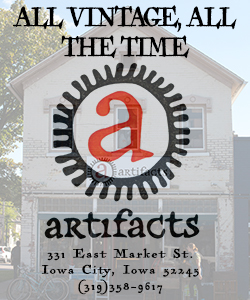This is an excerpt from an interview with Benjamin Chait on April 17, 2017. The interviewers were Cory Christiansen and Eric Leichtman.
Eric Leichtman: Tell us a little bit about you, who you are, kind of a background. You were born in South Florida?
Benjamin Chait: Right, I grew up in Coral Gables. As a kid, I was working-class, lower middle class. My dad worked for my uncle. We had one car. I mean, I was just your typical kid. I got 5 scholarships to go to Tulane University or else I wouldn’t have gotten to go. I attended Tulane University and studied architecture, became an architect, did my graduate studies at Washington University in architecture and urban design. I came to Iowa City in 1974 as a hospital architect working in the hospital, doing in-house remodeling of small projects. Hansen Lind Meyer was doing the big buildings and now they are done by other big architects. But I worked in the hospital and there were three people in my office.
EL: What stage of development was the hospital in at that time?
It was probably 30% of what is there now. I mean, the general hospital was there and there were a couple of little buildings. Boyd Tower was just finished as I was leaving. I didn’t last there very long. So, I came here as an architect and then I went into private practice architecture. I worked for private companies, doing county homes, county care facilities, schools, whatever. I did that for a number of years. Then I just wanted to do my own thing, so I became a sole practitioner and I was a developer. I did renovation, restoration and just little projects on my own.
Cory Christiansen: How did you go from architecture to being an entrepreneur?
Looking at business as problem-solving kind of seemed to me to be very similar to my training as an architect. When opportunities would show up, I would treat them in that kind of a way. I went down this road of being more of an entrepreneur, see an old piece-of-shit building and make it into something different; restore it, fix it up; take a warehouse and make it an 8-plex. That kind of stuff. That is kind of how I got here and what I first started doing.
But when we did the theme laudromat, we created an identity and a brand that was completely using the architecture to make the architecture work with the opportunity. That is kind of what I was really good at, doing that kind of thing. Just like when we moved the video store to Pearson’s, it was just making the transitions and changing things and then taking the old video store, which was here in a shit retail location, gutting it and making The Gallery. It’s seeing something and then seeing what something can be, vs. what it is. The biggest factor, I think, in all that is not being afraid, which is the no-fear thing, which is dangerous.
For me, failure is quitting, but trial and error is more evolution and evolving. You may start off chasing this vision that you have and if you’re thorough and open-minded and pay attention, you’ll see something is working and something is not working, and you’ll do more of one thing than another and it will evolve.
Having an idea…there is no right or wrong really about anything. It is either going to work or it’s not going to work. It’s either going to be effective or ineffective. To have an idea that you are pursuing, you’re not going to be wrong. You’re just going to find that it doesn’t work and it doesn’t work for you. It might work for somebody else. You just have to see what that is. That is the magic, I think. It’s like a cat, you throw it off the roof and it lands on its feet. It is being agile and being nimble.
CC: Where did the art stuff come in for you, I’m curious?
I think at the end of the day, I was an architect because I couldn’t think of anything else I wanted to do more, until I found something I wanted to do more, which was after I was an architect; kind of like what you’re talking about. I was creative and I was more of a visionary. I am not an artist. I can see things and I can design things, but I am not a painter. I can’t draw. So, that is why I’m an architect, because I could always see the possibilities. I was really good at being a conceptional designer.
CC: But these are yours behind you, aren’t they, your artwork?
Yeah, but it is the construction. It is just my interpretation. I can’t draw figures and I can’t paint paintings. In the heyday of my video empire and all that stuff, I had a studio in one of my video stores; I had assistants that helped me do these things, so it was kind of like production assistants that made all of the little shit. I have that whole aspect of my stuff, and it is in my house at home. I have never really sold any of it. I have a ton of it. It is modular, interactive architecture. The theory is that you can move these panels and change the geometry and have a completely different experience. There’s the design of that. So there’s my art.
CC: So why start an art gallery?
Well, in the 70s and 80s…where Active Endeavors is, there was a place called Things, Things and Things, which you probably never saw. It was more of an urban boutique. It was more of a pottery barn, room-and-board meets trendy. It was a cool place that had furniture, clothes, cooking stuff and cookies. It was awesome. That was there and then it wasn’t there; they retired. We always wanted to have something like that.
Moving the video store out of here, which was very successful, in a space that had been renovated over and over and over again from 1883 all the way to when I bought the building in 1979; I had 8 foot ceilings downstairs and 4 feet of other ceilings above it; the basement downstairs was a dirt floor that was 5 ½ feet below the ceiling. We stored all of our shit down there. You could walk, I could, hunched over. I could not move the video store because it was making too much money to not have it. But once we moved it, we then had the opportunity to renovate the space. We never had a plan. We never had a business plan, never had a clue about how to have a gallery. We just did it. I mean, it was that simple. We just fearlessly did it.
When we bought Pearson’s, there was a local group of artists called Arts Iowa City. One of the members approached me about having a space for their gallery. That introduction to them gave me the idea that we can help you have a gallery in our gallery, and we can have a symbiotic relationship, and they provided me with a hundred volunteers that staffed my gallery for a year and a half. I gave them shows. So that conversation led to the conversation of having people working for free in exchange for space. That is how I met Dave. Dave worked at the art museum for 35 years and retired. He was on their board. That is how I met him and he taught me everything I know about having a gallery, helped me build all the fixtures, based on his experience from the art museum. It was kind of like just blind luck that I met Dave. That is, more than anything, how I stumbled into having what turned out to be a very successful gallery.
EL: Did the members of Arts Iowa City help do all the marketing?
No, they just staffed it (the gallery). They just sat down there in 4-hour shifts. I would go down there every 4 hours and say hello to a new one and get rid of an old one. I had cameras; I could watch the store and could see what was going on, who was coming in. It was a great relationship because I met Dave and I had all of this free help. We met all of these artists that were in their community that had shows. It was just a…how did it happen? It happened not because I had a plan, not because I had a clue—I just did it! It evolved and became what I was doing. I was doing digital photography at the time. Then I had Dave and then I had printers and then I just kept doing stuff that I liked doing.
CC: Was it that group that linked you to most of the artists that you represented or would you say it was the shows that you put on that brought people in?
I think having a gallery like we did, the caliber of the space, the caliber of the gallery, I mean, it was like a magnet. If everybody who came in the gallery who wanted me to have their work in the gallery would buy one thing, I would have a killer gallery. At a period in time I would talk to 6 or 8 people a week that wanted to have stuff in our gallery. We had a great gallery.
The most important thing I can say about that is I have no clue. I didn’t have a business plan—I just did it. I got lucky. I got lucky with Dave. I got lucky with them. All these things happened, and we had great artists and built a great reputation. Probably the thing, aside from getting old, was just the whole thing we were talking about earlier, marketing, the market. People aren’t buying art; they are buying shit online. It is a little town and was a little gallery, and even though people loved it, if they really wanted to spend a lot of money, they would go to New York, just because that’s what people did.
CC: Do you think it is the money issue with art? Do you think that’s why things have changed, that prices are escalating and people are saying, “I just don’t want to spend that kind of money on art.”?
I think it is the Amazon thing, the technology thing, it’s the time. I think you see it more now and read about it, if you look, you can read all about the demise of a brick-and-mortar retail. Even though Amazon is opening brick-and-mortar stores, for the most part, certain retailers are going to make it and certain ones aren’t.
It is just that kind of supply-chain shit somehow connects to all of this other crap. That is my best explanation.
Are there still upscale galleries in New York? Yeah. They are charging way more than 50%. I had an artist here that did the metal sculpture, the really cool contemporary stuff. He is out of Des Moines. He got connected to a gallery in New York. I read a review that someone in New York wrote that he will be selling 6 figures at some point in the not-too-distant future. But those are exceptions. It is unique, heavy as anything.
There is another kid (He’s not a kid; he’s your age or older) who does cast bronze and other things, and I’ve had his work. It is fairly pricey but he sells on the coast for 10 times what I would ever sell it for. He makes lamps that weigh 1,000 pounds and tables that weigh a ton. He is a production artist and has a cast. He does fairly well but not here. It is just too small of a town and too frugal of a town. I think it is the time and energy of everything, is why I think it isn’t working or didn’t work, and I can’t see it ever working.
I just can’t see it unless somebody wants to do it like I did it, as a labor of love, a passion. It was economically viable marginally but it wasn’t…it didn’t cost me a bunch of money, but it didn’t make me a bunch of money.
CC: How did you get involved with the schools, because you did high school shows and things like that?
We had a high school art show. I can’t remember how we decided to do it, but it was the emerging artists. Kids didn’t have a place to do stuff, so we created a high school show for kids, for high school kids and we did that for 5-6 years. We asked our customers to help us defray the cost of the show and the cost of putting it on and even put out a little Blurb book that we self-published and either gave to the kids or sold to the kids. When we did our Small Work show, which was a way to meet new artists and have a small source of revenue, if we had 50-100 people in a show and we charged $25 to enter the show, times 100 people; that’s a fair amount of money to use for prizes and advertising and all that kind of stuff. When we did the high school show, we didn’t want to have to charge the kids even $25, so we found sponsors that helped us provide the money for prizes. We talked to local merchants and put together a gift bag and all that kind of crap. For these kids for that 5 years, to have their work in our gallery was like, “Pinch me, I’m not really here!” It was an experience that was pretty significant for some of these people.
Nobody ever did the high school art show like we did. The banks will have an annual show of K-12 work and stuff like that. We had all the public schools and Scattergood and the Mennonite school. I mean, it was a cool thing. We just quit doing it. Then we had the Small Work show and other things we tried through the gallery, which were all fairly successful. That last line I can’t remember, Benjamin’s Buttons show that we did wasn’t ever quite as good as the Small Work Show. It was different. We tried lots of things. There wasn’t anything we didn’t try in the gallery or in life.
EL: What do you think is happening to some of those artists that showed a lot of their stuff at your gallery and now that it is closed?
Well, there is really no place for them to be. There are galleries in Cedar Rapids. They are doing shows and they are finding galleries around the country but they have always had that. There is just nobody to replace me. I am not saying that because I have a big head (I have a big head for other reasons, I guess.) The biggest thing about me as a gallery owner is I wasn’t really motivated to sell. If I can help you get it, that’s fine. If I can facilitate you finding something that you like, I’ll help you. But I’m not like a used car salesman, you need this shit and you need it now. Oh, don’t leave, I’ll give you 10% off. I wasn’t a hustler. I think people really liked that. I did a lot of custom work, making things for people out of their own stuff. It was a unique time and place and more of an attitude of a labor of love basically.
EL: Closing the gallery gave you the opportunity to do your next venture?
Right, right. Having about a year to kind of let the dust settle, my images are still working for me and I’ve been able to at least learn enough to try the e-commerce thing. All of the things that were problems for me in the gallery, getting it screwed up, getting framed or getting a bad print or whatever, I have somebody else do it. It is all outsourced. I’ve checked it and products are fine.
CC: Obviously Iowa City is a fairly affluent town. There’s got to be a fair amount of art collectors in this town, or do you feel that is not the case?
No, I am not sure. I have not found them and I had some really good art. I had a lot of range of art. On occasion people would come in that didn’t have a huge resistance to spending $2,000-3,000. I would take shit out to these houses that are out there and I was amazed! I don’t get out much; I stay here all the time. The houses that are out there are huge. The ones that I went into didn’t have anything in them. So, there’s a lot of money out there.
CC: But not a lot of art.
Not a lot of art. Where do they go? I don’t know. I have no idea how they get what they get but some people are a little more sophisticated than others, but for the most part…I was amazed at how big the houses were and how little there were in them. And I put some nice stuff in some big houses, but a few compared to the thousands that are out there. It just blows me away! They weren’t customers and a few of them became customers.
CC: I know you said that part of this new project is just, people are frugal in the Midwest.
I think so. Frugal and then they can get on Amazon or they are on Facebook and can see what they can get from ad things; just like we’re going to be doing. Art.com, I mean, we did all of the art for The Lodge, but they bought it all from Art.com. We just framed it for them and installed it for them. They bought it from Art.com for nothing. We put frames on it. It’s student housing but that’s what they put out there. But I think people do that a lot.
EL: What are your goals for iconiciowa.com
I am hoping that I can find the niche and the target market; people like my wife and her sisters and her in-law friends would want to have it and give it to their friends or family, or people who used to live here or that kind of a thing. We did a helluva business with the university, not with the university but with people in departments that had people that left or people that were visiting and people that wanted to give gifts to and the gifts were generally in the $50-300 range. We sold a lot of either art or my art or my images that people could take with them from having been in this community or take with them to China or Australia as a gift to the people they were going to visit. I mean, that market is there, we just have to figure out a way to let them know we’re here, that we’re doing something. Theoretically, that could be a market.
EL: What would you say your biggest success is throughout your career up to this point?
Marrying up, obviously! But I think the most successful venture was the video stores. At one point we were listed in Video Store magazine as a top 100 chain in the country, between our stores and satellites and all that kind of crap. But even the video thing…one of the things that I realized is that I’m not a rocket scientist. I’m not even that smart. I work better when I have people around me that are smart. The old adage is that you just need to surround yourself with people that are way smarter than you and let them do shit that you can’t do. I didn’t know anything about movies. I met somebody that was a movie fanatic, and I talked him into being my manager. He ran the company for me until he died young of cancer. He did the buying. He was the middle manager that helped build the team. I would open stores and close stores that I would never go into. I had a store in West Branch for awhile and I was never in there, ever, since it opened or since it closed. That kind of a thing. It was all about being here 18 hours a day. I say this a little tongue in cheek, but running the empire, paying the bills, getting the money, getting the paychecks and all that kind of crap. It sounds really cool talking about it, but it was just different being in it. I always wanted to have a war room with the big lights and boards all over. When we had restaurants all over, they would call here every day with their sales. I would chart them and made sure we knew what was going on, but it wasn’t all that successful. It was just what we did.





